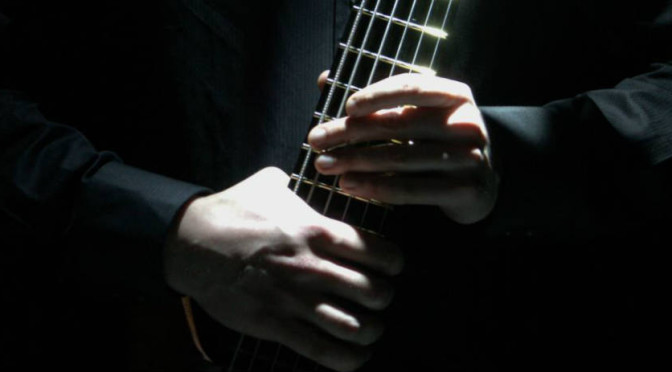Learn Basslines in 6/8 Time Signature – Bass Practice Diary – 17 July 2018
6/8 is one of my favourite time signatures to play in. And I know several drummers who feel the same way. In this post I’m going to share with you some of the reasons why I love 6/8. As well as some of the key principles you need to know in order to groove in the 6/8 time signature.
This week, most of my practice time has been taken up by writing and recording examples for a book that I’m writing. The book will be a follow up to Electric Bass: Improve Your Groove which was published earlier in 2018. So, instead of showing you what I’ve been practising this week, I’m showing you some of the examples that I’ve been writing. And specifically I’m playing examples in the time signature six eight (6/8).
What is 6/8?
6/8 simply means that every bar contains six eighth notes. But you shouldn’t count the eighth notes 1 2 3 4 5 6. The basic feel of 6/8 is two beats per bar with each beat subdivided into three eighth notes. A better way to count 6/8 is 1 2 3 – 2 2 3. If you’re not sure what subdivisions are, then check out this free lesson.
Rhythmic Subdivisions on Bass Guitar
How can you make 6/8 sound more interesting?
In my opinion, the 6/8 time signature gets really interesting when you realise that a bar of 6/8 is mathematically no different from a bar of 3/4. It’s important to understand that this is only true with a straight 3/4 feel. If you play 3/4 with a swing or shuffle feel, then it’s the same as 9/8. But I’ll explain more about 9/8 in next weeks practice diary.
3/4 and 6/8 both contain six eighth notes in every bar. So any rhythm that you can play in a straight 3/4 feel can also be played in 6/8 and vice versa. Once you understand this, you suddenly have a wealth of options for playing on and off the beat in two different feels simultaneously. The 3/4 feel gives you three beats and three off beats in each bar, and the 6/8 feel gives you two beats and a further four places where you can play off the beat in every bar.
For more about beats and off beats check out this free lesson.
All of these beats and off-beats exist in one bar of 6/8, and if you can learn to feel both the 6/8 and 3/4 feels simultaneously within the 6/8 time signature, then you can create some really wonderful grooves.
Play the Examples in the Video
The examples in the video are just a small selection from the book that I’m writing. While researching this section of the book, I’ve been listening to as many examples of 6/8 rhythms as I can. I’ve heard music from all over Africa, South America, Eastern Europe and India to name just a few. I’ve discovered so many different approaches to playing in 6/8. And I’m happy to share just a few of them with you here ahead of my book being published later in 2018.
I wrote this first example to illustrate the difference between the 6/8 and 3/4 feels. Bars 1 and 3 have a typical 6/8 feel. Whereas bars 2 and 4 contain the three quarter notes that could be defined as 3/4.

The idea for Example 2 is that I’m using the 3/4 feel over the 6/8 but I’m focusing more on the off-beats. Look in particular at bar 2. There is a note on beat one and then the remaining three notes land where the off-beats would be in a bar of 3/4.

6/8 is a very under used time signature in rock music. Example 3 is my idea for a rock riff in 6/8.

The final example features a rhythm called Bembe. Which has it’s roots in African music but is best known in Afro Cuban music.



4 thoughts on “6/8 Time Signature Bass Grooves – Bass Practice Diary 13”
Comments are closed.